#also... there was a trivia item not included in the set which literally killed me >>>
Text
JOY OF LIVING
May 6, 1938

Directed by Tay Garnet
Produced by Felix Young for RKO Radio Pictures
Written by Gene Towne, Graham Baker, Allan Scott, based on an original story by Dorothy and Herbert Fields
Synopsis ~ Broadway star Margaret Garrett (Irene Dunne) has spent her whole life working to support her sponging relatives. When she meets carefree Dan Webster (Douglas Fairbanks Jr.), she learns how to have fun for the first time.

The film was in production at RKO Studios from December 6, 1937 until February 8, 1938.
PRINCIPAL CAST
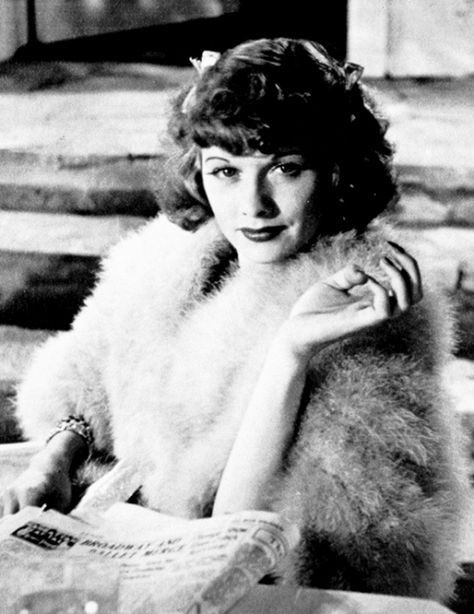
Lucille Ball (Salina Pine) makes her 36th film since coming to Hollywood in 1933.
“Do you expect me to support this family of leeches?” ~ Salina Pine
Irene Dunne (Margaret "Maggie" Garret) had appeared with Lucille Ball in 1935′s Roberta. Between 1931 and 1949 she was nominated for five Oscars.

Douglas Fairbanks, Jr. (Dan Brewster) also appeared with Lucille Ball in Having Wonderful Time (1938).
Alice Brady (Minerva) won an Oscar in 1938 for In Old Chicago. This is her only film with Lucille Ball.
Guy Kibbee (Dennis) also appeared with Lucille Ball in Don’t Tell The Wife (1937).
Jean Dixon (Harrison) also appeared with Lucille Ball in I’ll Love You Always (1935).
Eric Blore (Potter) appeared with Lucille Ball in Old Man Rhythm, I Dream Too Much, and Top Hat, all in 1935. He also appeared with Ball in Fancy Pants (1950).
Warren Hymer (Mike) also appeared with Lucille Ball in Kid Millions (1934).
Billy Gilbert (Café Owner) appeared with Lucille Ball in His Old Flame (1935), I Dream Too Much (1935), So and Sew (1936), and Valley of the Sun (1942).
Frank Milan (Bert Pine) makes his only appearance with Lucille Ball.
Dorothy & Estelle Steiner (Dotsy & Betsy Pine) were real-life sisters making their first and only appearance with Lucille Ball.
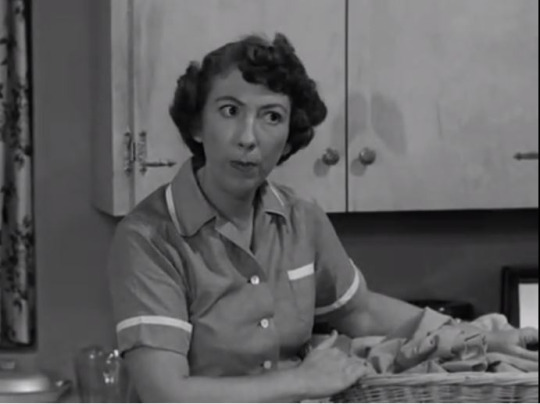
Phyllis Kennedy (Marie) appeared with Lucille Ball in 1937′s Stage Door. She was also Tallulah Bankhead’s maid in “The Celebrity Next Door”, a 1957 episode of the “Lucy-Desi Comedy Hour.”
Franklin Pangborn (Band Leader) appeared with Lucille Ball in Stage Door (1937), A Girl, A Guy, and a Gob (1941), and Lover Come Back (1946).

James Burke (Mac) appeared with Lucille Ball in Blood Money (1933), The Bowery (1933), and The Affairs of Annabel (1938). He was also seen on “I Love Lucy” as the owner of “The Diner” (ILL S3;E27) in 1954, and would go on to make an appearance on “The Lucy–Desi Comedy Hour” (1958) as the man who deliver Whirling Jet the racehorse to the Ricardos.
John Qualen (Oswego) appeared with Lucille Ball in The Three Musketeers (1938).
Spencer Charters (Magistrate) appeared with Lucille Ball in The Farmer and the Dell (1936) and Look Who’s Laughing (1941).
UNCREDITED CAST
Richard Alexander (Angry Man in Revolving Door)
Stanley Blystone (Cop at Dock)
Bill Cartledge (Boy at Skating Rink)
George Chandler (Taxi Driver)
Joe De Stefani (Waiter)
Bill Dooley (Courtroom Janitor)
Pat Flaherty (Autograph Hound)
Tay Garnett (Man on Phone in Newspaper Office)
Chuck Hamilton (Court Bailiff)
Al Hill (Look Photographer)
Kenner G. Kemp (Roller Skater)
Fuzzy Knight (Sideshow Piano Player)
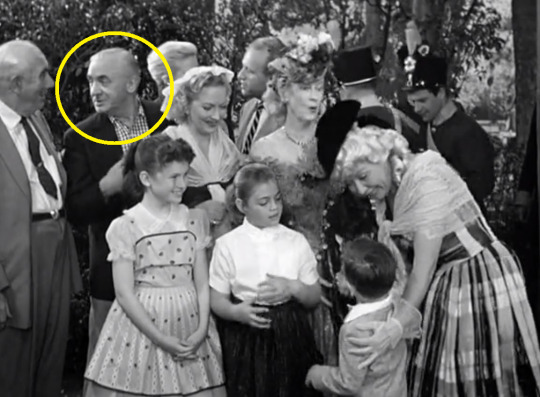
Mike Lally (Backstage Photographer) was a background performer who did ten films with Lucille Ball as well as two episodes of “I Love Lucy,” and at least one of “The Lucy Show”.
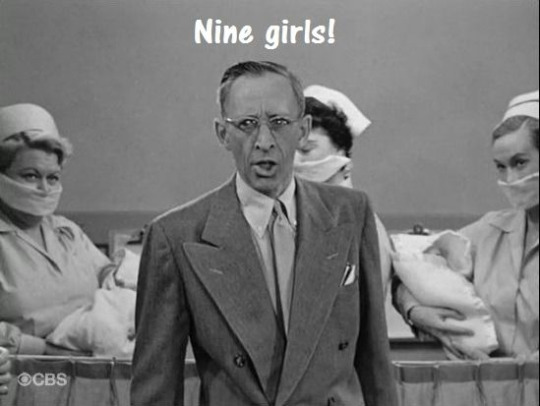
Charles Lane (Fan in Margaret’s Dressing Room) was a ubiquitous character actor appeared in 7 films with Lucille Ball between 1933 and 1949; four episodes of “I Love Lucy” from 1953 to 1956, all as different characters; two episodes of “The Lucy-Desi Comedy Hour”; and four episodes of “The Lucy Show” as Banker Barnsdahl.
Frank Moran (Cop with Gravel Voice)
Clarence Nash (Donald Duck Voice)
Dennis O'Keefe (Man in Building Lobby)
Franklin Parker (Third Producer)
Bob Perry (Seaman)
Russ Powelll (Man Leaving Elevator)
Cyril Ring (Man in Margaret’s Dressing Room)
Bert Roach (German Waiter)
Grady Sutton (Florist)
Frank M. Thomas (Arthur)
Charles Williams (Pitchman at Recording Studio)
Harry Woods (Cop)
JOY OF TRIVIA
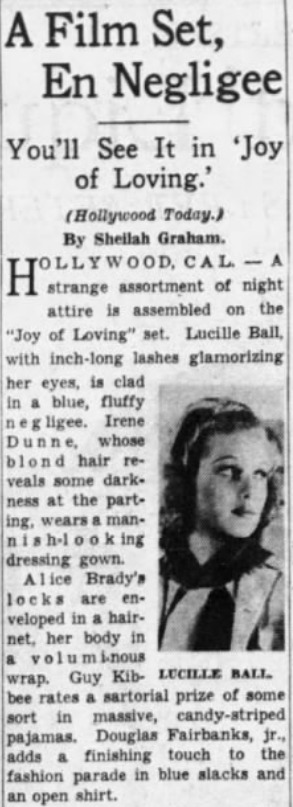

“Why do you always smile when I talk to you?” Miss Ball queries Doug [Fairbanks] between takes. "Because I’m a polite little boy,“ he replies. "You Rat” says Lucille coldly.
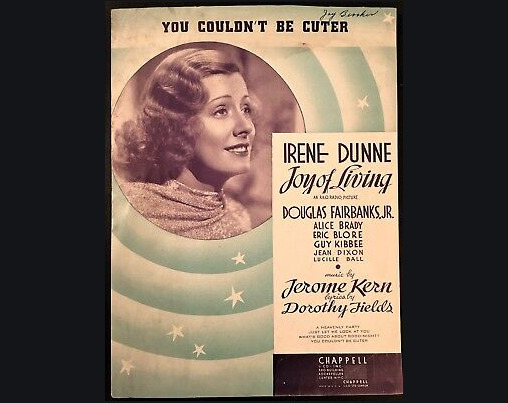
The film features the hit song "You Couldn't Be Cuter," written by Jerome Kern and Dorothy Fields.
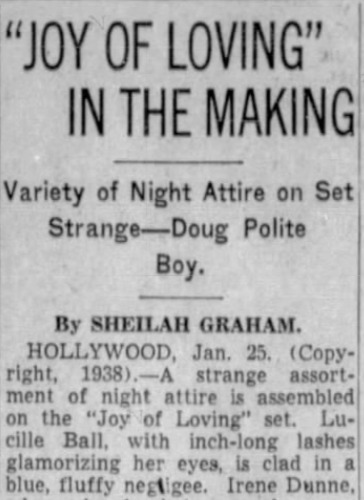
The working title of this film was Joy of Loving.
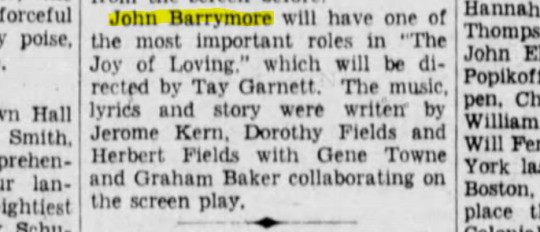
According to an October 1937 news item, John Barrymore was set for the lead in the production.

It seems that the entire town of Tulare, California go on board to promote Joy of Living, with a give-away contests and all the local merchants participating.

On April 16, 1942, a tragic car accident happened outside the Tudor Theatre in New York City where the film was playing. A car plowed into a pole by a drunken driver, killing his passenger. The press flashcubes also captured the ironic marquee in the background as the police attempted to cover the body.

Ty Garnett's production budget quickly ballooned out of control, topping out at over a million dollars, an astronomical sum for films at that time. Despite the priceless talent, Joy of Living didn't have a chance at recouping its costs and was a financial failure for the studio.

A publicity photo of Lucille Ball taken for Joy of Living.
Lucille Ball remembered watching the stars and comparing their styles; "Hepburn 'telegraphed,' she said - 'Well, I'm going to be funny' - whereas [Irene] Dunne always surprised, even in repeated takes of the same scene. But I watched her do takes-literally, one day there were thirty-two takes-and twenty-five must have been different. She really worked on how to do that scene. Where Kate would do it the same way every time and telegraph it every time.'"
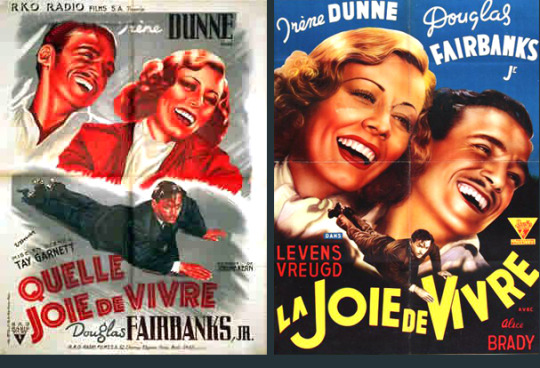
The film enjoyed a worldwide release. Here are film posters for France (left) and Belgium, which include both the Flemish (”Levens Vreugd”) and French titles.

The film was released on DVD (Warners Archive Collection) on April 20, 2009.
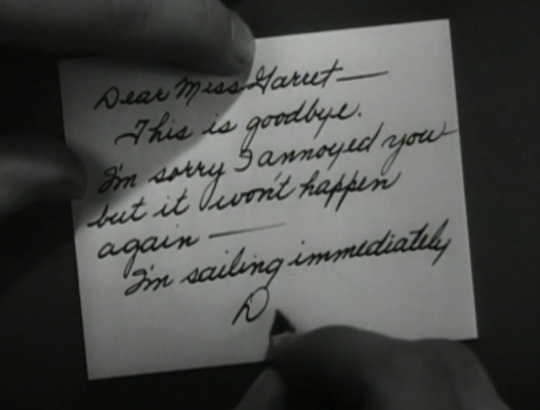
#Joy of Living#Lucille Ball#1938#Irene Dunne#Douglas Fairbanks Jr.#RKO#Charles Lane#Mike Lally#James Burke#I Love Lucy#The Lucy-Desi Comedy Hour#Phyllis Kennedy#Tay Garnett
6 notes
·
View notes
Text
WILD ARMS 2 - Illsveil Prison
Here’s a fun set piece: Ashley gets framed and tossed in the juzgao in a zany Xanatos Gambit style ploy to spring Brad from jail and get him to join ARMS.

First up is the Empusa, a nice straight forward one. The source is the Greek shapeshifter of the same name (even the spelling!) said to appear variously as beautiful women or animals at the command of the goddess Hecate. They are also said to have a single copper leg, which in this case I think is the reason for the overall red coloring here. The variable woman or animal form I think is also cleverly accounted for here, as the Empusa model generally looks and moves like an animal, but if you look closely you can see that the game model is actually built with joints more like a human on all fours. Here they function much like guard dogs.

An interesting bit of trivia by association is that Hecate is the Greek goddess of magic, necromancy, ghosts, and of crossroads; The domain of crossroads here including the intersection of the natural and super natural, dead and the living, and by consequence this also positions her as a keeper of gateways. (It is in reverence to Hecate that the tradition began that a groom should carry his bride into the home, for to risk her tripping on the threshold would be an insult to Hecate and losing her favor might rob a house of its security.) Between that domain over barriers and crossing them and holding the secrets of magic she is often depicted with, or represented by a key or rings of keys. While not traditionally a goddess of prisons, in this instance her Empusa roaming about definitely evokes the impression of her domains at work.
Her domain of course also includes literal cross roads and the associated features: fated meetings. And her popular iconography at the time included the placement of three separate graven images of her at three-way crossroads. The meaning here with the three core protagonists meeting for the first time being obvious.
ALSO, her iconography includes dogs, specifically watchdogs, and when specified, black female dogs. This is the third instance of black dogs already (first being the Barghest, 2nd being the “black wolf” Luceid) and the heavy dog themes are pretty intentional; Brad also met a puppy in his prologue story who will show up again later, he is held in service by a ring of bombs implanted in his neck named Gias[sic] after the Irish Geas, and Brad will comment at the end of this chapter on how the ARMS logo looks like it has a dog collar.

It’s actually pretty damn impressive how perfectly fit for this dungeon these enemies are, and a good thing too! because they’re really carrying this whole dungeon on their back as far as thematic content...

...because then there’s the Beast Pillar. I feel like a spoke way too soon before about there already being more obtuse enemies than I had first anticipated. Those I at least had a wild stab at. There’s really honestly nothing here. The word “Beast” and the word “Pillar” are all I got. That’s even the direct transliteration of the katakana, ビーストピラー(bii-su-to-pi-raa). It looks like a Diglett ina manhole. And for some reason it casts Vortex and Slowdown? Is it a whack-a-mole game? Is that what the Slowdown is about, but wouldn’t it make more sense for it to get faster, not for you to get slower? Or is the slow down about them appearing like traps in the floor to slow your escape? But why Vortex? Also they can Heal.

There’s also the bizarre detail that there’s a tiny stone pillar with humanoid face and something like an eye on it INSIDE the Beast Pillar model???? The only way to see it is when you kill a Beast Piller, (but then it’s all in red and hard to spot) or if you wait around for the camera to get in close to one in a group encounter you can sneak a fleeting glimpse as the animation loops. But this also tells me nothing...
Then we get a return of the Barghest from Brad's prologue dungeon, Green Hell, which lends a bit of consistency. They appear in larger numbers and at a higher level with a new special move "Human Wave," which I can only imagine must be some kind of translation error... not much to add on them that hasn't been said.

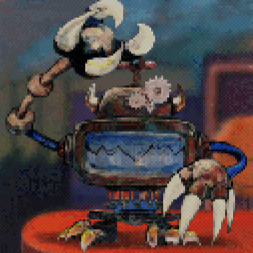
Then there’s the boss, named GAONIM, for some reason in all caps in English, even though his name in Japanese doesn’t seem to suggest that at all? Design wise it’s pretty clearly based on a Crane Game/UFO Catcher arcade machine, but with a monstrous disposition. The GA-O in the name is generally a sound effect used for things like a dinosaur’s roar, but I’m not 100% certain on the NI-MU part.
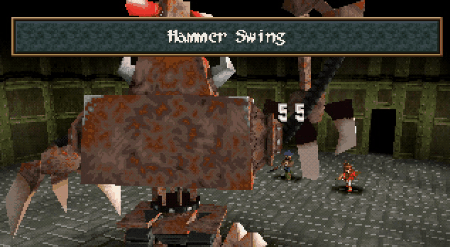

The only remote guess I have is that it could be a reference to the game NIM, which is a kind of mathematical puzzle game played between two people. The only relation I can think of is that it is generally a game of picking items out of various groups or positions in a lineup, which kind of vaguely is evoked by the grabbing claw hand??? It’s a hell of a stretch. Although there are signs that the NIM game has some appeal in Japan, as it is a recurring family of puzzles in the Professor Layton games.
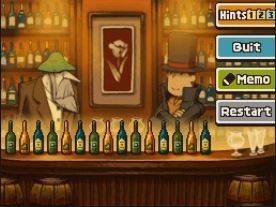
#wild arms 2#jrpg#psx#gaonim#empusa#beast pillar#professor layton#every puzzle has an answer#except the beast pillar#the beast pillar cannot be solved
5 notes
·
View notes
Text
CanvasWatches: Violet Evergarden
Ugh, I hate writing about good shows. It’s always so difficult to find something to talk about. With bad or average material, it’s so much easier to point at weak points and say ‘Yes, that wasn’t good. Here’s what I would do.’ Which is my favorite exercise when watching things.
But Violet Evergarden is good. Real good. The only complaint I could imagine lobbying is that Netflix didn’t simuldub it stateside. The villains.
I mean, it’s a show with a blonde protagonist who, out of love, lost limbs and had them replaced by mechanical prosthetics, with the actual story happening in a quasi-european setting approximately after a WWI analogue. Somehow, it’s not Fullmetal Alchemist, nor does it try to be. Freaking Magnus Bride had less superficial similarities, and it still fell into that trap.
It’s laudable.
What Violet Evergarden does do is done amazingly.
Spoilers, by the way. Go watch the show now, it’s that good.
I don’t cry for fiction. This isn’t a macho claim, I honestly view it as a minor failing of mine. I can identify sad and tragic parts of a piece, and I have emotions,[1] but when it comes to fiction, there’s just too big of a separation for me. I can see the strings.
This remains true for Violet Evergarden, but there are some real strong attempts to coax tears. Strong and original.
I like the ‘Girl learning to be Human’ trope.[2] Well, Person learning to be human, but, well, cute girls make everything better.
Point is, there’s a charm to watching someone who, through their personal circumstances, has zero idea how to operate in society, and approaches everything with naivety and a hunger to learn.[4] It’s a good character premise that gives ample comedic potential (Faux Pas, satire, general oddity), dramatic potential (lost time, awkwardness, satire again), and fanservice if you feel the need to provide it. It’s a great tool for side stepping ‘As You Know’ exchanges and still actually teach your audience about your fantastical world![5]
Violent is given this status by, initially, being raised as a tool for war. She doesn’t know her family, her age, nor have a name when she’s gifted to The Major by his brother, and from there begins her journey to learn to be a human.
It’s not until she’s finally removed from the context of war and loses the man she devoted herself to that she can truly begin learning the hardest part: empathy.
And you thought my ‘don’t cry at media’ tangent was unrelated! Ah-ha!
Up until Violet begins her job as an Auto Memory Doll[6] people existed in one of three categories: Enemy (people to kill), Allies (people not to kill), and The Major (Person to take orders from). Sure, The Major gave her a name, and taught her to read and write, but on the battlefield, where most people have to be broken down into a state of “Kill or be Killed”, it’s hard to teach a young girl to be a person.
We begin the story right at the point of transition: Violet has lost both her arms, hasn’t heard from The Major since their last operation, and the war’s pretty much over. And her broach is missing. A lot’s happening suddenly, and she’s being taken off by a retired officer turned postal company president, Claudia Hodgins. It’s a confusing time for those involved.
Here’s a fun trivia fact I had to have explained to me: you may ask yourself ‘Why does Violet bite things? It sure helps make her seem alien, but why did she develop the habit?’ Well, Violet doesn’t have hands anymore, so that leaves her sensitive lips to feel things with![7]
Anyways, per The Major’s wishes, at first Hodgins attempts to leave her with some of The Major’s relatives (The Evergardens), the matriarch of which expresses hope that she and Violent can help comfort the other after losing family to the war.
Violent, of course, misreads the intent and explains she won’t be able to replace to Ms. Evergarden’s son. Violet is also generally uncomfortable with this prospective life of not doing anything or receiving orders, so runs after Hodgins, rejecting the Evergarden home.
She does, apparently, have no qualms taking the surname, which seems like a weak justification for it. She’s closer to The Major, shouldn’t she have adopted that complex noble name instead?
Speaking of which, an anime trope grosser than Student/Teacher relationships: The Usagi Drop![8] It’s a romantic relationship where one of the participants (literally or essentially) raised the other! Ah-ha, what a disgusting abuse of a power structure.
Now, to the anime’s credit, there’s at least ambiguity to Violet and The Major’s exact feelings towards each other. The Major isn’t around to clarify if he views Violet Paternally or Romantically, and Violet’s still working through being emotional stunted. However, it’s ambiguous enough to make both options equally likely.
During the first couple of episodes, the meaning of The Major’s ‘I love you’ being a romantic confession could’ve been kosher, and even expected. But as Violet’s backstory is revealed, and we learn that The Major pretty much raised Violet, romance ceases to be charming and instead shifts into worrying.
This isn’t helped when a parallel is drawn with a diplomatic engagement between a 14-year old princess and a prince at least 10 years her senior.
Surprisingly, when it comes to royal pairings, I find myself a bit more forgiving about more squickier elements. Yes, the massive difference in ages isn’t an ideal depiction, and the princess being underaged by modern standards doesn’t help, and the fact it always seems to be an older man courting the younger woman is troublesome.
However, what the situation does have is extenuating circumstances. It’s not just a precocious crush being exploited; it’s years of bad tradition, diplomatic planning, and the fact that it’s two individuals obviously trying to make the best of a bad situation.
The princess is going to get married off to someone for diplomatic gain, might as well be to someone who’s shown empathy for the princess and the situation.
But for Violet and The Major, I would hope the final call comes down on The Major viewing Violet as an adopted daughter
There’s a second major point of ambiguity surrounding The Major to drive the plot: is he dead? Most of the cast accept that his Missing in Action status after a major bombing of the building Violet was found in means the man’s likely dead, but Violet holds out hope.
In most stories, if The Major was still alive, there’d be more hints than provided by the anime, or they’d just accept he was dead and continue forward.
The Major being dead provides a stronger break and arc for Violet. Not only has the war she’d been existing for ended, but the man she’d been devoted to entirely is also gone. At the start of the series, Violet has nothing and must rebuild herself. To deny closure of that chapter by letting The Major be in hiding would just undermine the entire opening premise.
So, of course, the last shot of the series is an ambiguous shot of Violet arriving at the house of an unseen client and stumbling with her well rehearsed introduction, giving the audience a winking ‘Is he?’.[9]
If he is alive, it’d be a massive jerk move because it’s not just Violet’s life he’s derailing and introducing tragedy to. Major Gilbert Bougainvillea has a family, after all, including a mother who mourns him and a brother with undirected rage over the loss of his younger brother. Also friends probably. We’re not given any real reasons for The Major to crawl out of that final battle, put his fists on his hips and say ‘Sweet. I’m gonna abandon my old life!’ Admittedly the backstory of The Major is very light in the anime adaption, but that lightness also paints a lack of past tragedy.
The rules of ‘show don’t tell’ and ‘write the story about the most interest point in the character’s life’ also implies that which is not depicted is not interesting.
Thus, The Major should be dead and should stay dead.
Which concludes my… review of a single character…
Let’s talk about the show proper.
Much like Isle of Dogs, it ticks off a few items on my favorite things list, but more of the narrative devices.
It’s a series of vignettes with a reoccuring protagonist acting as bridge, set in a light fantasy world that is much closer to modern day than is traditional, and has major emphasis on writing as a narrative device. And alsi fantasy prosthetics, a fondness that will go unexamined today!
Also, one of the other Auto-memory Dolls wears glasses.
It’s produced by Kyoto Animation, which I think is tying with Studio BONES for my favorite studio (based solely on the works they produce), which is a major plus.
The individual episodes are very character-driven, including one about a playwright that made me really want to get back into writing plays myself.[10]
Most episodes explore Violet from the perspective of the episode’s client, while offering some world building. Episodes one and two, as a pair, exist to introduce Violet and the world, and thus don’t have much for Hodgins (who gets his development through the rest of the series) and Erica (who doesn’t actually get much besides explaining the origins of typewriters and the term ‘Auto Memory Doll’).
Episode three is when the series rolls up its sleeves and says “Ah, we’re learning what it means to feel emotions? Get ready to choke!” and sends Violet to school, where everyone’s soul goes to die!
While trying to earn a coveted accreditation, Violet meets Luculia, who lost both her parents in the war while her brother returned home with an injured leg and a chip on his shoulder. During the course, Violet shows she can get the practical skills down easily enough, but when it comes to putting any actual soul into her letters, she turns in only tense reports.
Luculia graduates top of the class while Violet does not. Still, Luculia has decided she’s friends with Silver Arms, and sets to help Violet do better. Luculia’s attempts fail, and instead the two have a short heart to heart. Luculia’s brother has fallen to drink and hasn’t come to terms with coming home from war to find his parents gone, and Luculia doesn’t know how to tell him that it’s nice that they still have one another.
Violet takes that in, writes a letter for the brother, and repairs the relationship! Yay!
But that’s the formula. Everyone knows those beats! Got to earn the heart-wrench.
Episode four, Violet escorts her co-worker Iris back to Iris’s hometown for a surprise birthday party. Iris isn’t happy about this turn around, due to a rejection of her feelings and her parents not really supporting her life path.
Again, Violet writes a letter, makes everyone feel better. As you do.
But we also learn the origins of names: Iris got hers from the flowers blooming when she was born, and Violet… got hers at the training center when The Major awkwardly realized Violet didn’t have a name. Thus strengthening the parent/child relationship of The Major and Violet and they better not make this gross, I swear!
Then we reach the royal engagement. I mostly discussed that in the relationship dissertation, but episode five is a strong examination of making a relationship work, despite distance, age, obligations, and other fragile matters. The episode also gently nods to the fragile state the continent’s in after the war, with dissidents to the results of the war still out there, waiting to take center stage.
Episode six is fine. It is. Massive library, Violet meets a reclusive nerd scared to follow the path of his parents. Reclusive nerd crushes on Violet. Violet is ignorant of his feelings because of course, and she accidentally inspires him to change jobs from researcher to Action Archivist! Roaming the world searching for lost texts! Good world building, not heavy on the emotions.
And so we come to Episode Seven: probably the closest I’ve arrived at crying in years.[11]
Violet is hired to transcribe a famous playwright’s newest play. He’d been out of the public eye for a while, but he’s much lauded. However, his house is a mess, he’s slow to get the work started with Violet, using her as a maid for a bit and inspiring her to try cooking.[12]
Anyways, Oscar Webster is writing a children’s play. His first, I believe. Which is a dead give away for his emotional problems. Still, the snippets we get really showcase the creative writing process and hit me with nostalgia for the Theater for Young Audience class I took once, and the child’s theater summer camp I worked for.
Then we get flashbacks to Oscar and his daughter moving into a new place after his wife’s passing,[13] then watching his daughter progress through what is one hundred percent cancer as we get the snippets of what inspires the play.
And Violet meets him living alone in his ill kept house.
Which is where I’m ending my summary.
Violet Evergarden is a good anime. Beautiful visuals, distinct characters, strong world building, and amazing writing.
Go watch it now.
Though, on your way over, consider supporting my Patreon. Then, after you watch all of Violet Evergarden, come talk to me about it. And maybe check out the other things I’ve written and drawn and otherwise created. Especially since I’ve decided I’ve procrastinated long enough on a certain project.[14]
After all, August 1st is coming. Sounds like a good day to go camping and/or catch a wave.
Kataal kataal.
[1] Often strong ones!
[2] A specific variant of the Fish out of Water trope that, unfortunately, TV Tropes doesn’t seem to have an entry for, as it hasn’t been applied to Violet.[3]
[3] Wait, found a video essay. “Born Sexy Yesterday”. Which, admittedly, examines the trope’s problemsome aspects, but,eh, I stand by its strengths.
[4] This is why Starfire is the best character on Teen Titans. fight me.
[5] I keep meaning to use it myself, but the concept I have would spoil a major setting secret for my current project.
[6] A scribe with a typewriter. Anime has an ability to give fanciful names to things at a level I hope someday to emulate.
[7] Why she did it during the flashback when The Major got her the broach is anyone’s guess. Maybe it relates to that anecdote about a kid eating a letter from Maurice Sendak.
[8] Named for a manga that was apparently pretty cute until it suddenly really wasn’t. At all. I haven’t read it, but reputations do flourish.
[9] The light novel isn’t as ambiguous, but I won’t spoil it. Also, totally looking forward to picking it up once it gets translated.
[10] I guess I do have that play about tabletop rpgs that needs another draft with a better plot…
[11] Since I came downstairs after bedtime at exactly the wrong time of a medical drama show. Was like, four or five. Saw a man coughing up blood. Good times. Before my soul froze up and withered to the merry husk I have now.
[12] I really like seeing cooking used as a narrative device.
[13] Moving after a spouse dies is a very sad and subtle trope.
[14] Though a Three Leaves, Three Colors review may pop up first. It’s the current bedtime anime.
0 notes